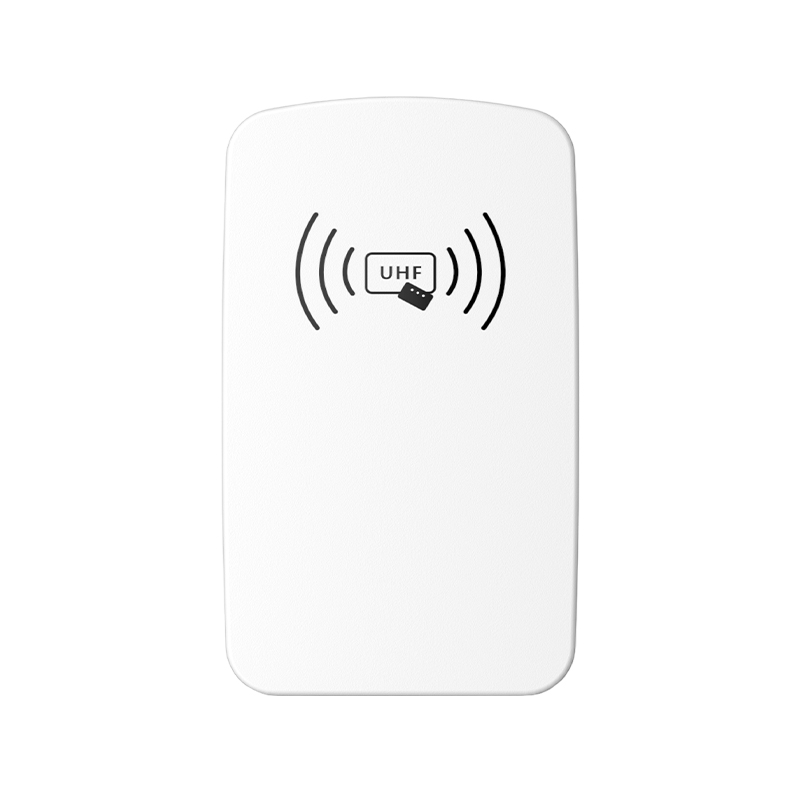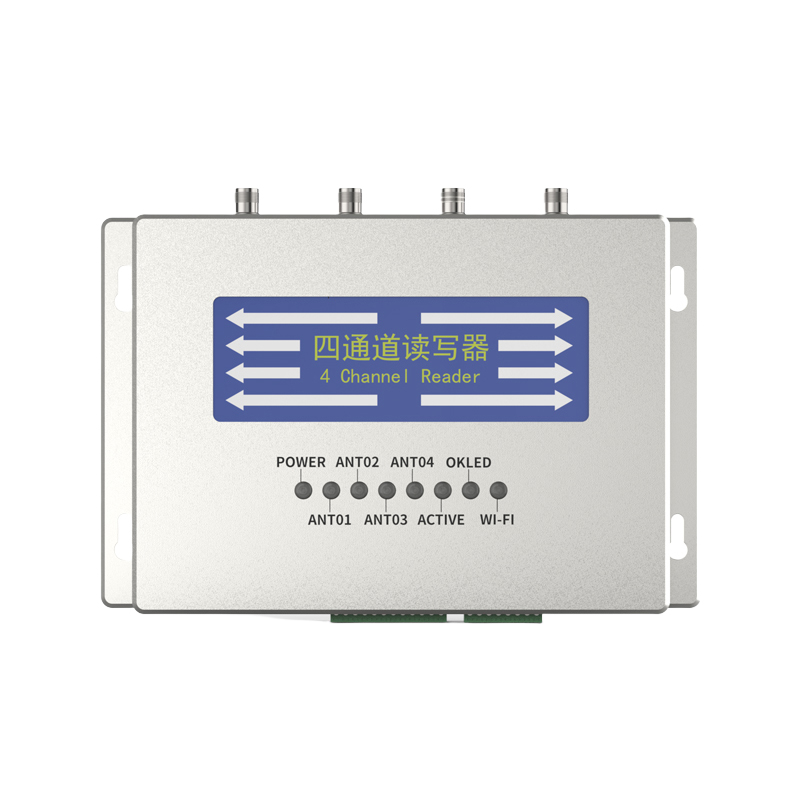From Stuck to Silky — "Neural Reflex Arc" Optimization of Decoding Desktop Reader Firmware
Release Time : 2025-09-16
In high-frequency usage scenarios such as government service counters, hospital kiosks, financial terminals, or logistics check-in stations, desktop reader writers often face continuous card recognition tasks. Users quickly approach their cards, and the system frequently initiates authentication requests. Delayed device responses or communication interruptions can directly lead to queue backlogs, operation failures, and even service interruptions. While hardware performance is certainly important, the true determinant of a smooth user experience lies in the firmware embedded within the device. It acts as the reader's "nervous system," optimizing response timing through precise command scheduling and communication management to minimize latency and failure rates.
The firmware's core mission is to ensure efficient, stable, and orderly information exchange within limited hardware resources. Each card recognition process involves multiple steps, including radio frequency field activation, card response, data exchange, and encryption verification. If each step is sequentially and waited for completion before proceeding to the next, cumulative latency will increase significantly. To this end, the firmware of modern desktop reader/writers employs a predictive processing mechanism. It prepares for the next round of RF field initialization or protocol stack loading before the previous communication completes, shortening the task switching interval. This "pipelined" operation mode allows the device to maintain a consistent rhythm even under high load, avoiding idle cycles caused by waiting.
In a multitasking concurrent environment, command conflicts are a major cause of failure. Multiple application processes may send commands to the reader/writer simultaneously. Lack of coordination can lead to command overlap, parameter confusion, or communication channel congestion. The firmware uses a built-in command queue management module to sort, deduplicate, and prioritize incoming requests. For example, identity verification commands are given a higher priority to ensure that critical services are not interrupted by lower-priority queries. Furthermore, the firmware sets reasonable timeout thresholds. If a communication is unresponsive for an extended period, resources are immediately released and a status code is returned to prevent system hangs and ensure that subsequent operations are not affected.
The stability of RF communication also relies on dynamic parameter adjustments. Factors such as different card types, placement angles, and environmental electromagnetic interference can affect signal quality. The firmware monitors the bit error rate, signal strength, and response time during communication in real time. If an anomaly is detected, it automatically fine-tunes the RF power, matching circuit parameters, or retransmission strategy to improve the first-pass recognition success rate. For devices supporting multiple protocols, the firmware can also quickly switch communication modes based on the card type, avoiding redundant detection and reducing delays caused by invalid attempts.
Furthermore, the firmware must have strong error recovery capabilities. Occasional read failures are inevitable during continuous operation, but these must not cause the device to panic. The firmware incorporates comprehensive exception handling mechanisms, such as automatic retry, state rollback, and context preservation. When a communication failure occurs, the system does not immediately report an error. Instead, it intelligently retries a limited number of times according to a pre-set strategy and logs the failure in the background for subsequent analysis. If the card is confirmed to have been removed, the RF field is quickly reset to prepare for the next card, preventing residual signals from interfering with new tasks.
At the system integration level, the firmware must also work collaboratively with the host software. Clear status codes and timestamps are returned through standardized interfaces, helping the application layer accurately determine the operation results and response time. Some advanced firmware supports asynchronous notification mechanisms, proactively notifying users of card arrival or read completion events, reducing resource waste caused by polling and further improving overall efficiency.
Finally, these optimizations don't exist in isolation; rather, they are integrated into a highly autonomous operational logic. The firmware continuously learns and adapts to usage patterns, maintaining composure and precision during high-frequency operations. It doesn't pursue extreme speed for a single operation, but rather focuses on long-term stability and predictability. It's this inherent sense of order that allows the desktop reader writer to remain calm in busy environments. Every beep is accurate, every data exchange is completed silently, becoming the silent and reliable support force behind high-load business systems.
The firmware's core mission is to ensure efficient, stable, and orderly information exchange within limited hardware resources. Each card recognition process involves multiple steps, including radio frequency field activation, card response, data exchange, and encryption verification. If each step is sequentially and waited for completion before proceeding to the next, cumulative latency will increase significantly. To this end, the firmware of modern desktop reader/writers employs a predictive processing mechanism. It prepares for the next round of RF field initialization or protocol stack loading before the previous communication completes, shortening the task switching interval. This "pipelined" operation mode allows the device to maintain a consistent rhythm even under high load, avoiding idle cycles caused by waiting.
In a multitasking concurrent environment, command conflicts are a major cause of failure. Multiple application processes may send commands to the reader/writer simultaneously. Lack of coordination can lead to command overlap, parameter confusion, or communication channel congestion. The firmware uses a built-in command queue management module to sort, deduplicate, and prioritize incoming requests. For example, identity verification commands are given a higher priority to ensure that critical services are not interrupted by lower-priority queries. Furthermore, the firmware sets reasonable timeout thresholds. If a communication is unresponsive for an extended period, resources are immediately released and a status code is returned to prevent system hangs and ensure that subsequent operations are not affected.
The stability of RF communication also relies on dynamic parameter adjustments. Factors such as different card types, placement angles, and environmental electromagnetic interference can affect signal quality. The firmware monitors the bit error rate, signal strength, and response time during communication in real time. If an anomaly is detected, it automatically fine-tunes the RF power, matching circuit parameters, or retransmission strategy to improve the first-pass recognition success rate. For devices supporting multiple protocols, the firmware can also quickly switch communication modes based on the card type, avoiding redundant detection and reducing delays caused by invalid attempts.
Furthermore, the firmware must have strong error recovery capabilities. Occasional read failures are inevitable during continuous operation, but these must not cause the device to panic. The firmware incorporates comprehensive exception handling mechanisms, such as automatic retry, state rollback, and context preservation. When a communication failure occurs, the system does not immediately report an error. Instead, it intelligently retries a limited number of times according to a pre-set strategy and logs the failure in the background for subsequent analysis. If the card is confirmed to have been removed, the RF field is quickly reset to prepare for the next card, preventing residual signals from interfering with new tasks.
At the system integration level, the firmware must also work collaboratively with the host software. Clear status codes and timestamps are returned through standardized interfaces, helping the application layer accurately determine the operation results and response time. Some advanced firmware supports asynchronous notification mechanisms, proactively notifying users of card arrival or read completion events, reducing resource waste caused by polling and further improving overall efficiency.
Finally, these optimizations don't exist in isolation; rather, they are integrated into a highly autonomous operational logic. The firmware continuously learns and adapts to usage patterns, maintaining composure and precision during high-frequency operations. It doesn't pursue extreme speed for a single operation, but rather focuses on long-term stability and predictability. It's this inherent sense of order that allows the desktop reader writer to remain calm in busy environments. Every beep is accurate, every data exchange is completed silently, becoming the silent and reliable support force behind high-load business systems.







